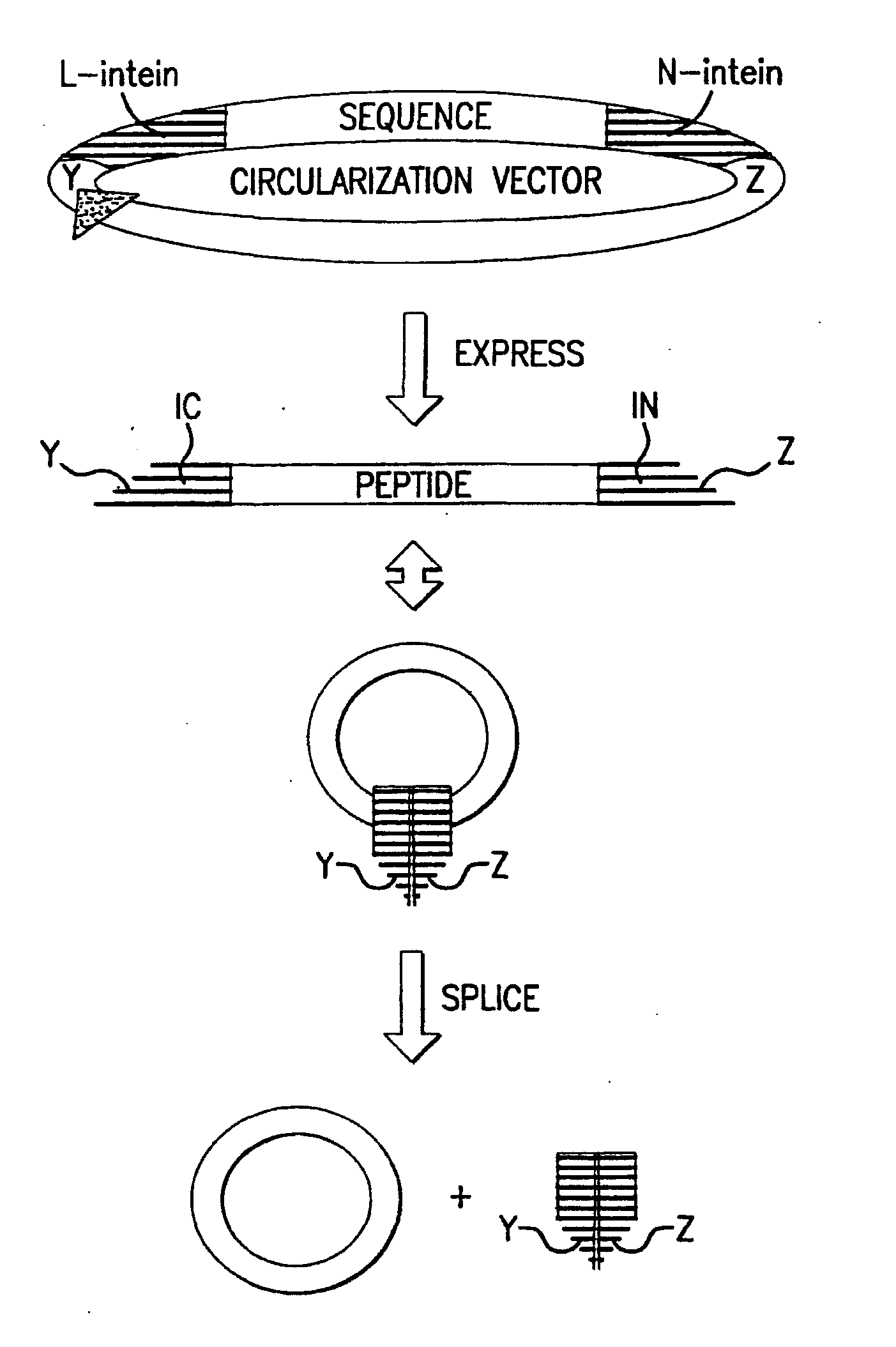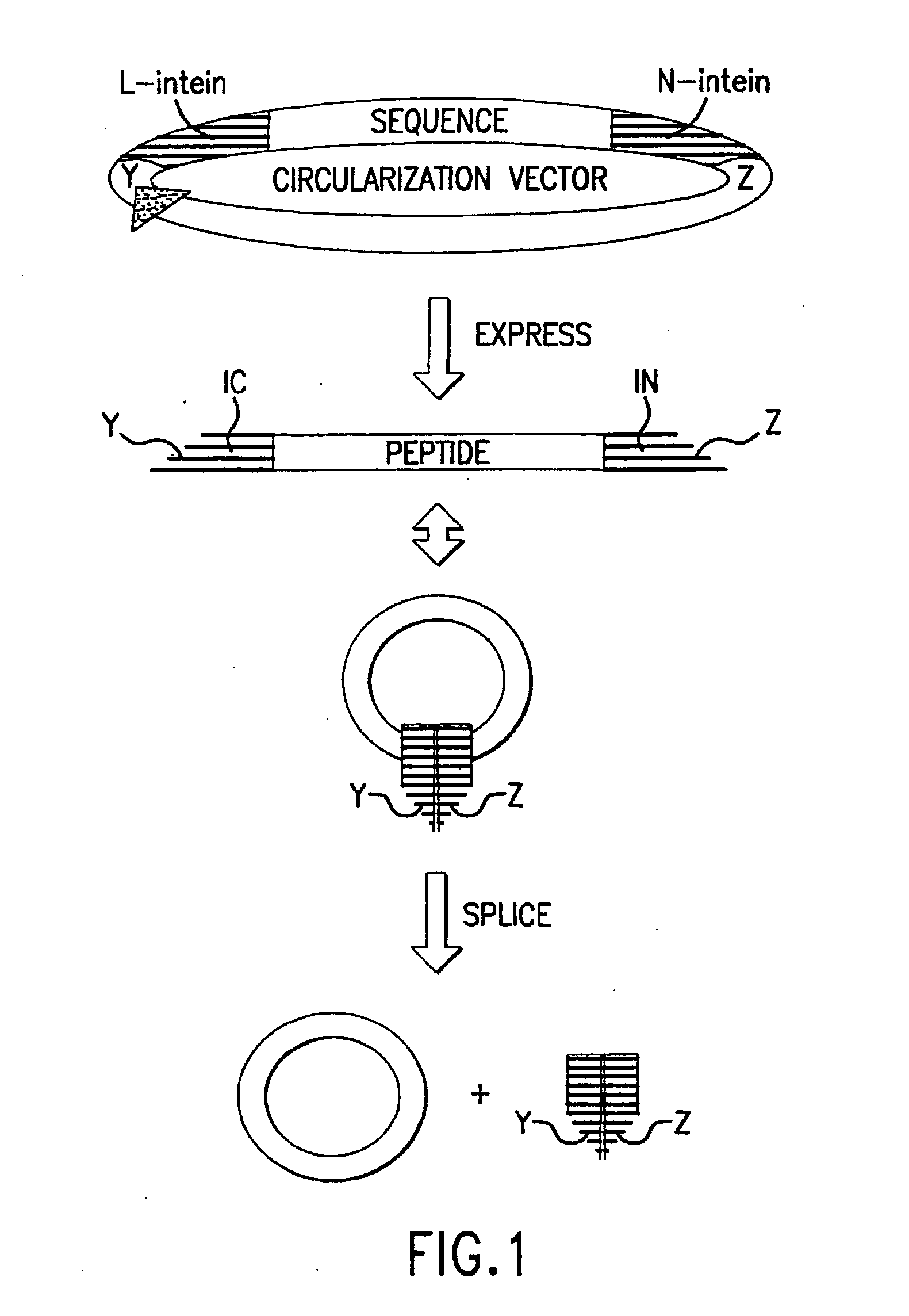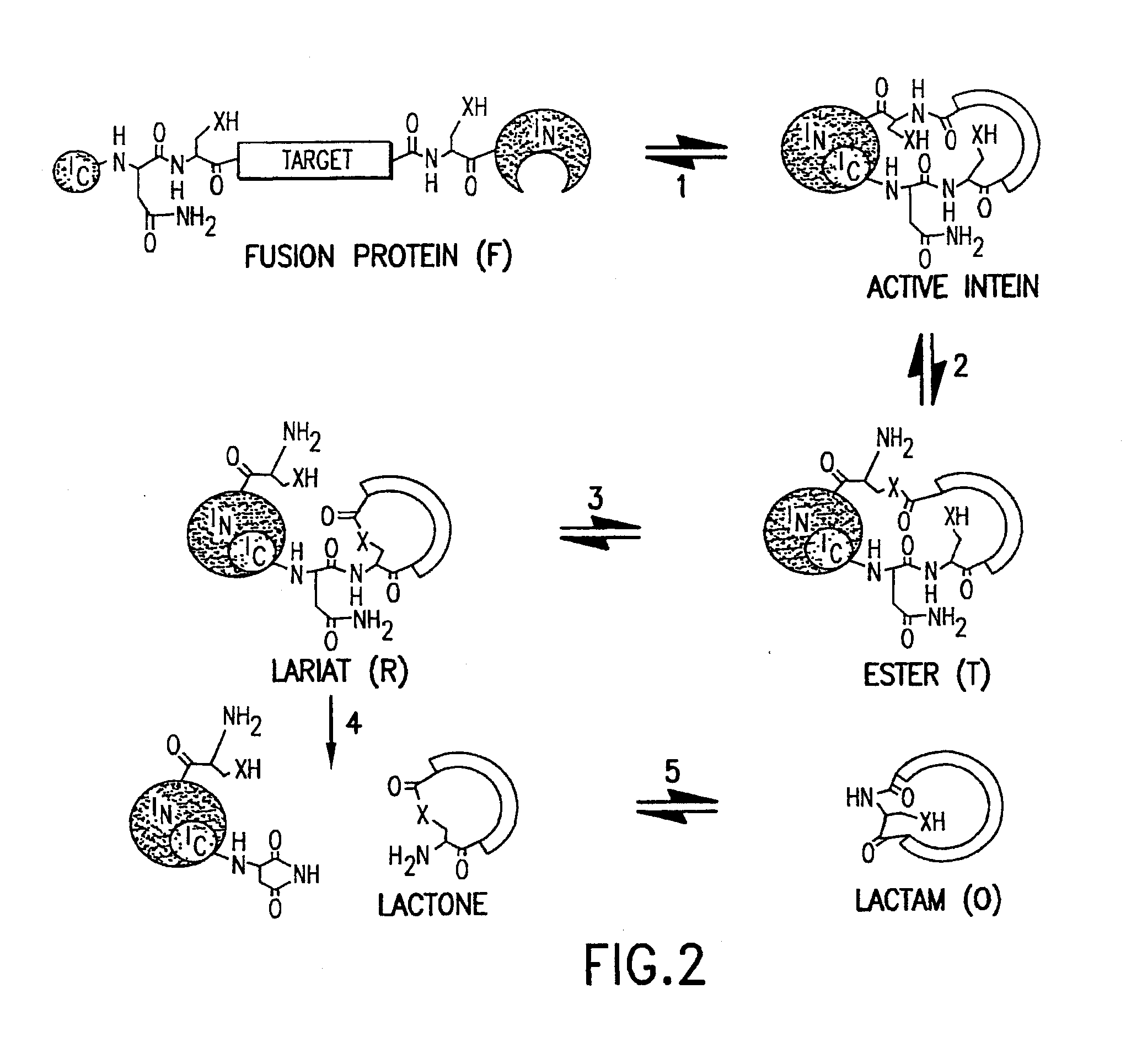Cyclic peptides
a cyclic peptide and peptide technology, applied in the field of biochemistry, can solve the problems of inability to screen for a particular biological activity, inability to perform screening assays, and high cost and impracticality of screening, and achieve the effect of facilitating transcription and/or translation of a nucleic acid molecul
- Summary
- Abstract
- Description
- Claims
- Application Information
AI Technical Summary
Benefits of technology
Problems solved by technology
Method used
Image
Examples
examples
Preparation of Cyclic Dihydrofolate Reductase (DHFR) and Cyclic Pseudostellarin F
Materials and Methods
Vector Construction
[0139] The gene for the Ssp DnaE N-intein (IN) was amplified from Ssp 6803 genomic DNA with Taq polymerase and primers introducing 5′-Bglll and Nsil and 3′-PstI restriction sites. The Ssp DnaE IC gene was amplified similarly with primers introducing 5′-Ncol and 3′-Ndel and Sacl restriction sites. Plasmid pDIMCP resulted from individually cloning the intein fragments into pDIMC7 [identical to pDIMC6 (see Ostermeier et al., Proc. Natl. Acad. Sci. USA 96:3562, 1999) except for conversion of a BamHI restriction site into Bglll]. An alanine to histidine mutation in the IC gene (A35H) was affected by Quick-Change mutagenesis (Stratagene) resulting in pDIMCPAH. Excision of the intein fragments as an Ncol / Pstl digest and ligation into pAR4 [derived from pAR3 (Perez-Perez, J. and J. Gutierrez, Gene, 158:141, 1995; American Type Culture Collection (ATCC) #87026) with a u...
PUM
| Property | Measurement | Unit |
|---|---|---|
| time- | aaaaa | aaaaa |
| time- | aaaaa | aaaaa |
| wet cell mass | aaaaa | aaaaa |
Abstract
Description
Claims
Application Information
 Login to View More
Login to View More - R&D
- Intellectual Property
- Life Sciences
- Materials
- Tech Scout
- Unparalleled Data Quality
- Higher Quality Content
- 60% Fewer Hallucinations
Browse by: Latest US Patents, China's latest patents, Technical Efficacy Thesaurus, Application Domain, Technology Topic, Popular Technical Reports.
© 2025 PatSnap. All rights reserved.Legal|Privacy policy|Modern Slavery Act Transparency Statement|Sitemap|About US| Contact US: help@patsnap.com



